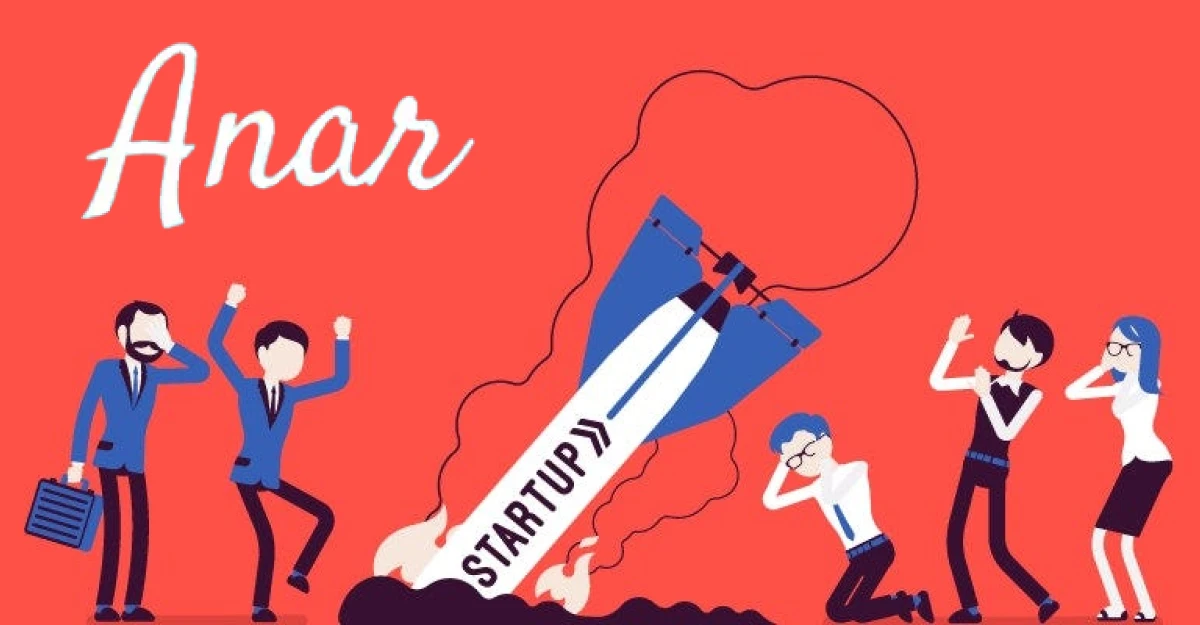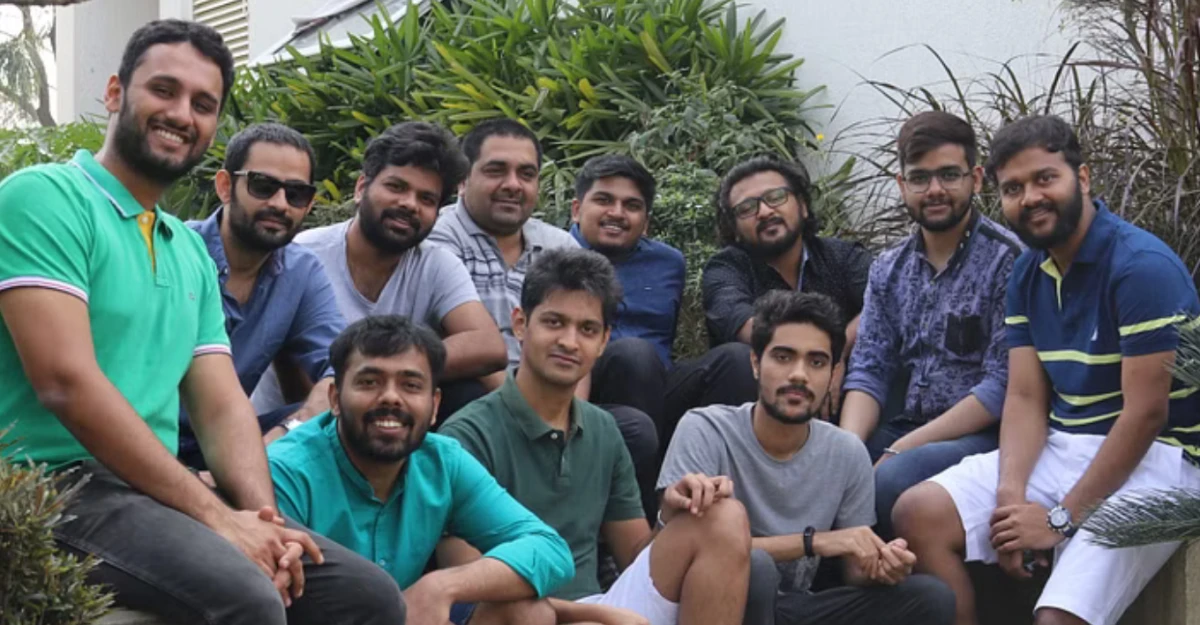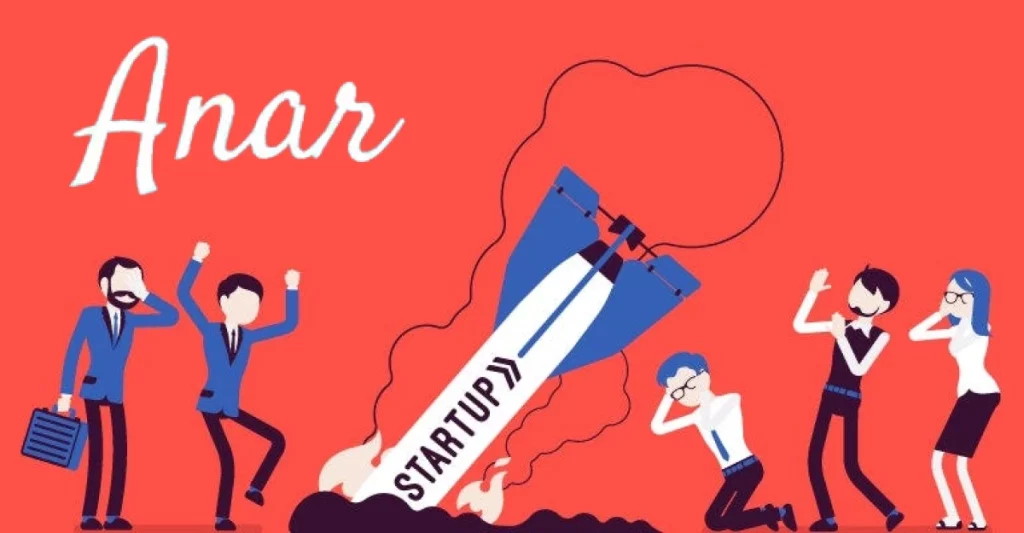Suppose you create a platform intending to revolutionize how small and medium businesses (SMEs) connect, only to see it crumble after a few years. That’s the story of Anar, a B2B networking platform that recently shut its doors.

Here is what the founder of Anar- Nishank Jain said on X (formerly Twitter)-
“It’s painful but it is what it is. After 4.5 years of crazy hard work, we are shutting down Anar and returning capital to investors. Sharing a bit about….”
Now the question is- Why did Anar shut down?
Let’s dive into why Anar, once a hopeful startup, had to call it quits.
(A) Anar: A Brief Introduction
To the uninitiated let me give you a brief information about Anar.
So, Anar was launched in 2020 by Nishank Jain and Sanjay Bhat. The idea was simple yet powerful- create a networking platform where small and medium businesses could connect. Think of it as LinkedIn but specifically for SMEs. On Anar, businesses could upload their product catalogs, post their needs, and interact with other businesses.
The startup attracted significant attention and raised $6.2 million in seed funding in September 2021, led by Elevation Capital and Accel India. Backers included well-known names like Titan Capital and angel investors from successful startups like Pratilipi and Meesho. With such strong support, what went wrong?
Go through the next section, and you’ll find out!
(B) Why did Anar Shut Down? Reasons Behind

In this section, we will discuss the prime reasons responsible for the shutting down of this ambitious startup.
Low User Retention
One of the biggest hurdles Anar faced was keeping its users engaged. Retention is crucial for any online platform. If users sign up but don’t stick around, the platform can’t grow. Despite trying various models and strategies, Anar couldn’t keep its users coming back. This low retention rate was a red flag that the platform wasn’t offering enough to make users stay.
Not Enough Value for Sellers
For a platform like Anar to thrive, it must provide clear benefits to its users, particularly sellers. Unfortunately, many sellers didn’t find enough value in Anar to continue using it. They couldn’t see how the platform could help them grow their business or solve their problems effectively. Without compelling reasons to stay, sellers moved on.
Failing to Solve Seller Problems
Anar struggled to address the specific challenges faced by its sellers. A successful platform must solve real problems for its users. In Anar’s case, the solutions it offered weren’t hitting the mark. The platform couldn’t create a significant impact in the sellers’ daily operations, leading to frustration and eventual disengagement.
Financial Woes
Financial performance is a crucial indicator of a startup’s health. Anar’s financial results for FY23 were disappointing. The company reported minimal revenue and significant losses of Rs.17.32 crore. Despite the substantial funding they raised, these financial struggles painted a bleak picture of the company’s future.
Limited Market Reach
Anar primarily attracted very small retailers or new businesses, those with a turnover of less than INR 50,000 per month. While this might seem like a good start, it actually limited Anar’s growth. Larger, more established businesses didn’t find Anar useful. This small target market constrained the platform’s potential to scale.
Offline Market Efficiency

One of the critical reflections from Nishank Jain was that offline B2B markets in India are incredibly efficient. In sectors like clothing, where business networks are small and tight-knit, it’s tough for an online platform to compete. These offline networks are based on personal relationships and credit systems, which Anar couldn’t replicate effectively online.
Market Misalignment
Anar faced a significant challenge in aligning its offerings with the needs of its target market. In fragmented categories like clothing, B2B leads generated by Anar weren’t substantial. Retailers in these sectors are used to sourcing from well-known offline markets and are often hesitant to shift online, especially when credit systems are involved. The platform didn’t address a pressing need or offer a solution significantly better than existing offline options.
(C) Learnings from Anar’s Experience
Nishank Jain shared some valuable insights from the Anar journey. He emphasized that for a tech platform to succeed in the B2B space, it must offer solutions that are much better than existing systems. In Anar’s case, the platform didn’t provide enough of an advantage over the efficient offline markets.
He also highlighted that solving problems in low average order value (AOV) categories like clothing is tricky. Retailers don’t see sourcing as a major problem that needs an online solution unless it’s vastly superior to what they already have.
We will thoroughly discuss the key takeaways from Anar shut down in the next section.
(D) Key Takeaways from Anar’s Shutdown

The story of Anar, a B2B networking platform that aims to revolutionize the way small and medium businesses (SMEs) connect, is a book of invaluable lessons for entrepreneurs and startup enthusiasts. Despite a promising start and significant funding, Anar had to shut down after a few years.
Here are the detailed key takeaways from Anar’s journey and eventual closure-
The Importance of User Retention
- Understanding User Needs: Anar struggled with retaining its users, a critical factor for any platform’s success. This issue highlights the importance of understanding and continuously meeting user needs. Retention rates are a direct reflection of how well a platform serves its users. For Anar, low retention indicated that users did not find enough value to keep coming back. Regular feedback loops and user engagement strategies could have helped identify and address these gaps early on.
- Consistency Over Time: Retention isn’t just about attracting users initially but keeping them engaged over the long term. Anar’s inability to maintain consistent engagement showed that initial attraction must be followed by sustained value delivery. Consistent communication, updates, and improvements based on user feedback are essential to keep users invested in the platform.
Delivering Clear Value to Users
- Value Proposition: Anar’s downfall was partly due to its failure to deliver clear and compelling value to its sellers. For any business, especially a platform, the value proposition must be evident. Users need to see immediate and long-term benefits. Anar’s experience underscores the need for startups to articulate and deliver a strong value proposition that addresses specific pain points effectively.
- Tangible Benefits: Platforms must provide tangible benefits that users can easily recognize and appreciate. Anar failed to make its value evident to sellers, which led to disengagement. Features and services offered should directly impact the users’ business positively, whether through increased sales, improved efficiency, or cost savings.
Addressing Real Problems Effectively
- Problem Solution Fit: Anar’s challenges in solving seller problems effectively highlight the importance of achieving a strong problem-solution fit. Startups must deeply understand the problems their target market faces and develop solutions that address these issues effectively. Anar’s solutions did not resonate enough with its users’ needs, indicating a misalignment between the platform’s offerings and the market’s requirements.
- Working on User Feedback: Continuously working on the product based on user feedback is crucial. Anar’s failure to pivot successfully between different models shows the need for iterative improvements. Startups should be flexible and willing to adapt their solutions to better fit the evolving needs of their users.
- Investor Relations: Returning capital to investors, as Anar did, reflects a level of responsibility towards investors. Maintaining transparent and positive relationships with investors is important, even in challenging times. Startups should communicate openly about their challenges and plans to pivot or shut down, ensuring investors are well-informed.
- Adapting to Needs: Startups must be willing to adapt their offerings based on user behavior and needs. Anar’s inability to pivot successfully between different models highlights the need for adaptability. Startups should be agile and responsive to market feedback, making necessary adjustments to meet user demands.
Financial Viability and Sustainability
- Revenue Models: Anar’s financial struggles, with minimal revenue and significant losses, emphasize the importance of having a robust revenue model. Startups must develop clear strategies for generating sustainable revenue streams. Relying solely on funding without a solid revenue plan can lead to financial instability.
- Cost Management: Managing costs effectively is equally important. Anar’s significant losses indicate that the startup may not have optimized its expenditure. Keeping a close eye on expenses and ensuring that spending aligns with business growth and revenue generation is vital for long-term sustainability.
- Effective Usage of Capital: Despite raising significant funds, Anar couldn’t translate this capital into sustainable growth. This points to the importance of using funding strategically. Startups should focus on areas that drive growth and sustainability, such as user acquisition, retention, and product development.
Understanding Market Dynamics
- Market Fit: Anar primarily attracted the smallest retailers or new businesses, limiting its market reach. Understanding market dynamics and ensuring a good market fit is essential. Startups should aim to attract a broad range of users, including larger, more established entities, to scale effectively.
- Offline Market Realities: Anar’s experience highlights the efficiency of offline B2B markets in India. Startups aiming to digitize traditional markets must deeply understand these offline dynamics and offer solutions that are significantly better. Offline markets often rely on personal relationships and trust, which can be challenging to replicate online.
(E) What’s Next for Nishank Jain?

Despite the setback, Jain remains optimistic. He hinted at tackling more significant problems that could redefine how society operates. While he didn’t provide specific details, he mentioned exploring a new venture in the AI space. This shows his readiness to learn from past experiences and move on to new, potentially groundbreaking opportunities.
Note: Have you ever wondered how Udaan became so successful? Go through the article “Udaan Business Model” and you’ll find out.
Final thoughts
In the end, Anar’s shutdown isn’t just a story of failure; it’s a narrative rich with lessons for future entrepreneurs. It reminds us that while innovation is critical, aligning that innovation with market needs and user behavior is equally important.
As Nishank Jain looks towards his next venture, the insights gained from Anar will undoubtedly shape his future business goals, offering hope and inspiration for others in the startup ecosystem.
You must always remember that the solutions you’re offering must be better than the existing alternatives. What are your thoughts on Anar shut down? Please comment below!

